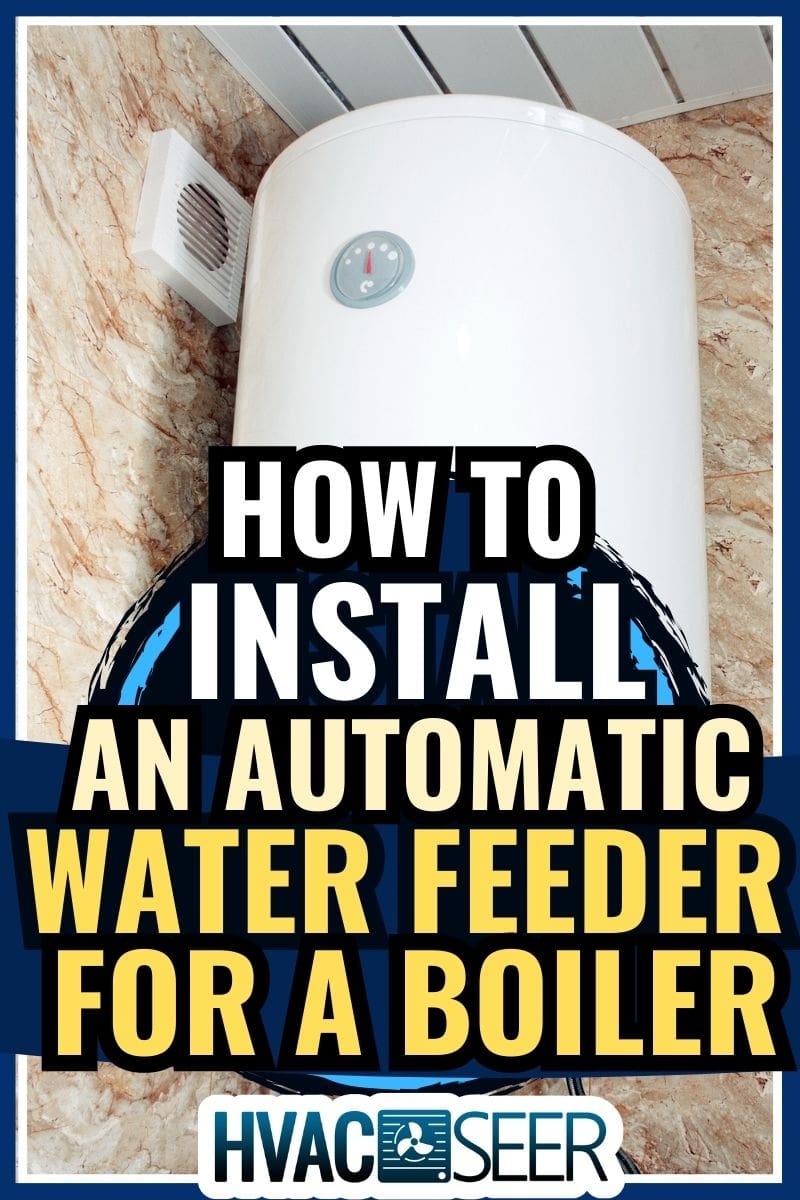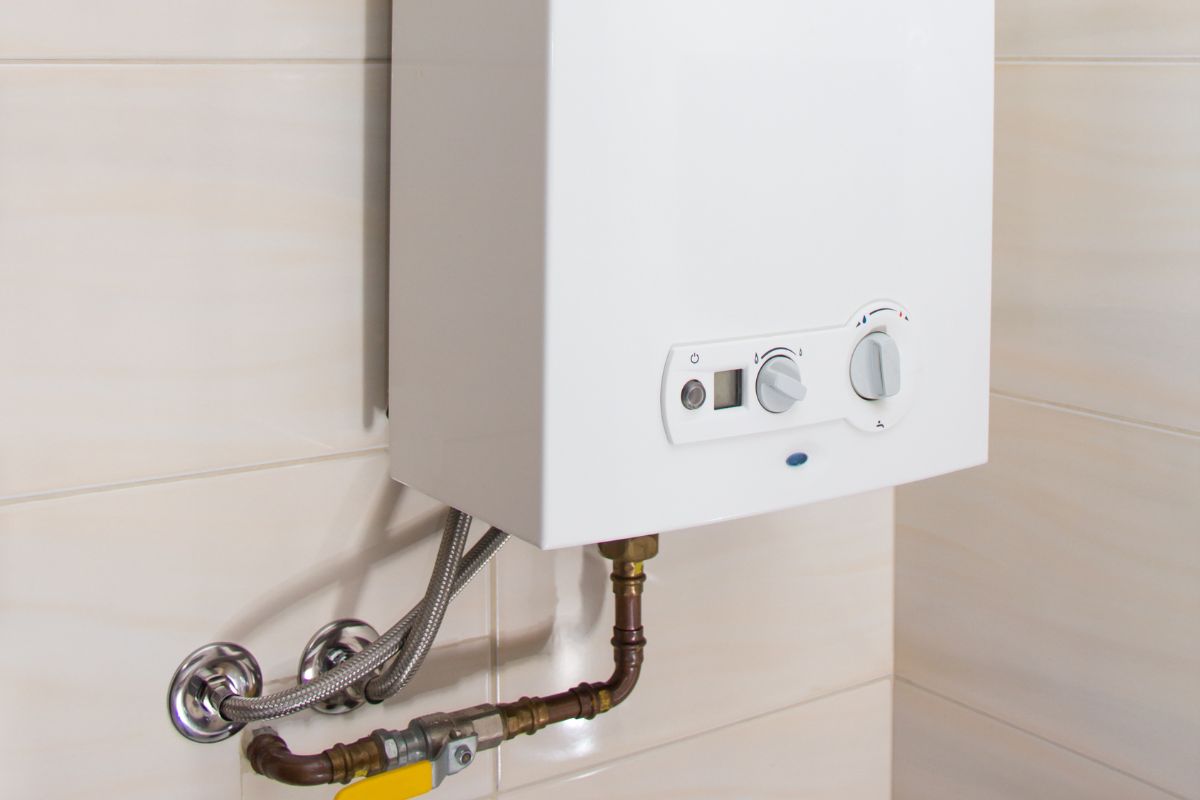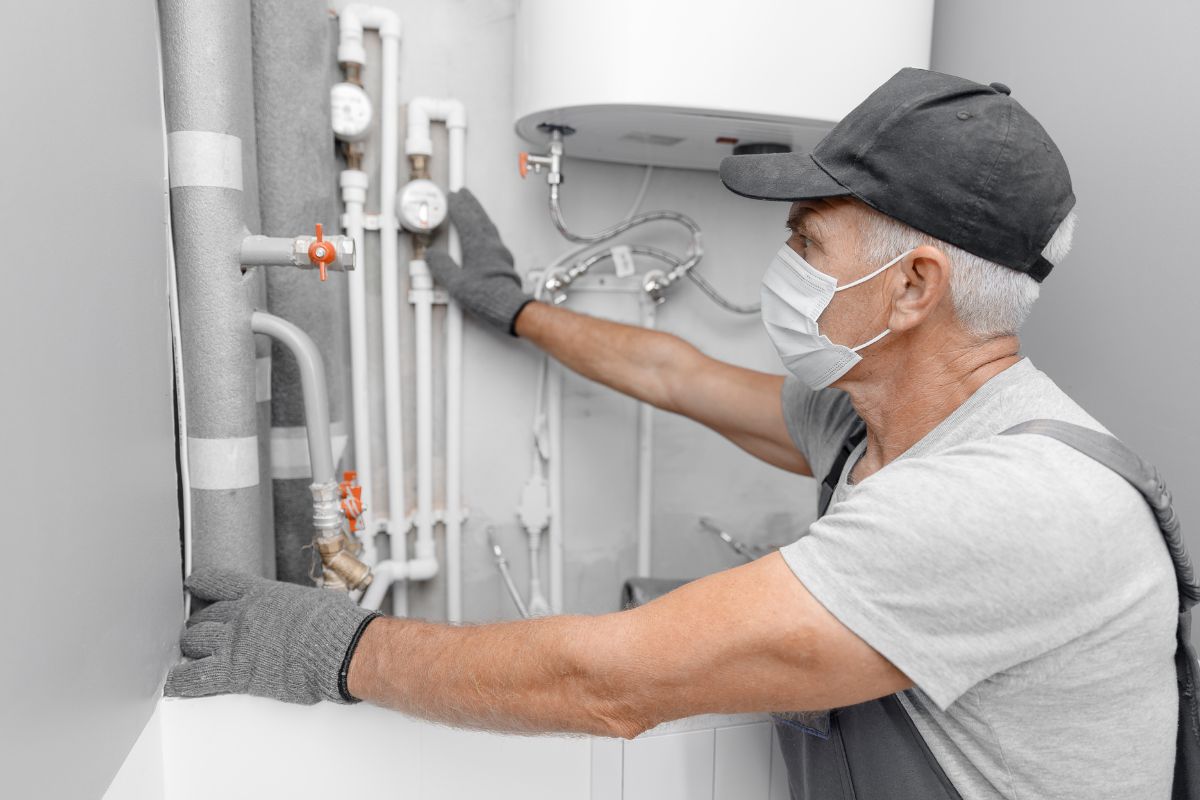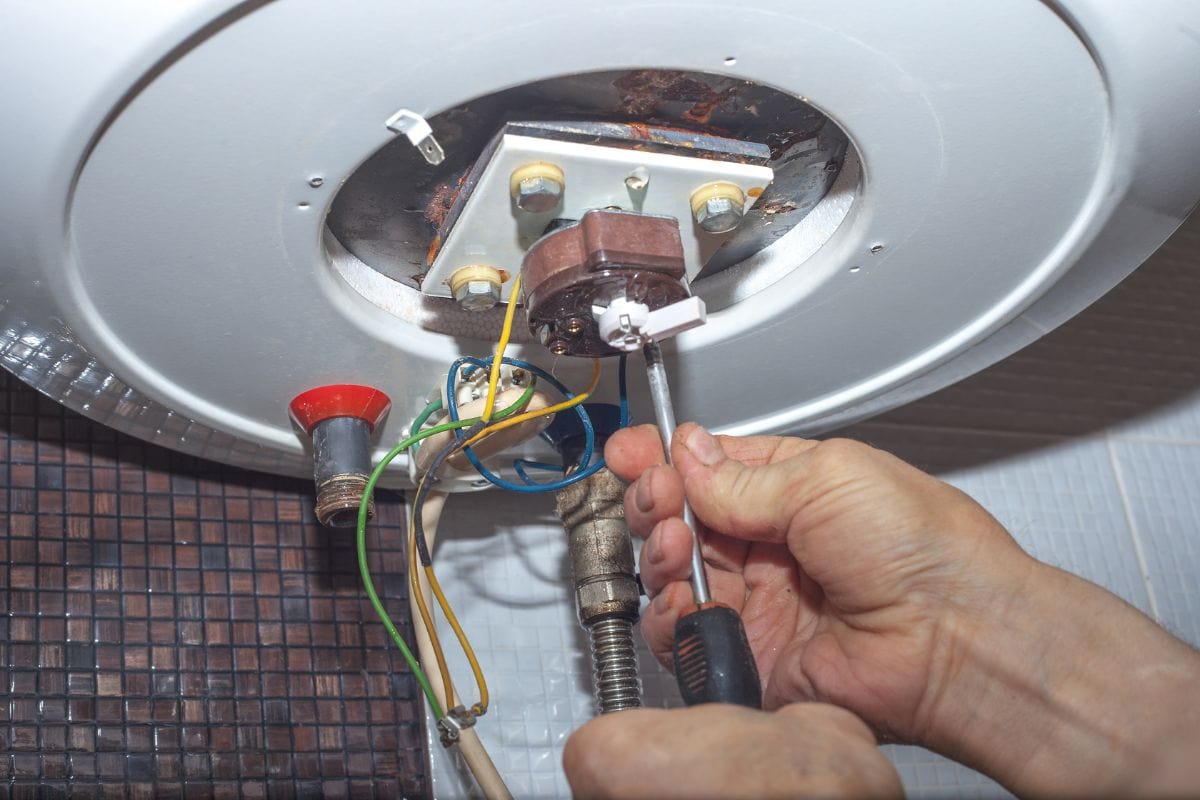A boiler is essential in any heating system, whether for a commercial building or a residential property. One helpful boiler component is the automatic water feeder, which regulates the water level inside the boiler. Setting up an automatic water feeder might seem difficult, but it is doable. We researched the process to help you install an automatic water feeder.
To set up an automatic water feeder for a boiler, follow these steps:
- Turn off the power to the boiler.
- Find the water feeder.
- Shut off the water supply.
- Install the automatic water feeder valve.
- Turn on the water supply.
- Adjust the water level.
- Test the automatic water feeder.
We'll guide you through the steps involved in installing an automatic water feeder for your boiler system. By the end of this article, you'll have the confidence to tackle this project and ensure your boiler operates safely and efficiently. We will also discuss troubleshooting steps and boiler maintenance for your future needs. Let's dive into the topic.

How to Set Up an Automatic Water Feeder for a Boiler
Here are the steps in setting up the boiler's automatic water feeder:

1. Turn Off the Power to the Boiler
Safety is paramount when working with any electrical equipment, including boilers. Turn off the power to the boiler before beginning the installation process. Follow the manufacturer's instructions for turning the power off to avoid mistakes and redoing your work.
2. Find the Water Feeder
The automatic water feeder is near the bottom of the boiler. It's a small device that's connected to the water supply line.
3. Shut Off the Water Supply
Close off the water supply to the boiler before installing the automatic water feeder to prevent water from flowing into the boiler while you are working on it.
4. Install the Automatic Water Feeder Valve
The installation procedure for the automatic water feeder varies depending on your feeder type. However, most automatic water feeders come with detailed installation instructions. Secure the water feeder valve to the boiler.
Typically, you'll need to connect the feeder to the water supply line and the boiler using copper tubing. Cut the tubing to the appropriate length using a tubing cutter and then attach it to the feeder and the boiler.
5. Turn on the Water Supply
Turn on the water supply to the boiler after the feeder installation to let water flow into the boiler and fill up the feeder.
6. Adjust the Water Level
You need to adjust the water level inside the boiler after turning on the water supply. Ensure the feeder is level, then adjust the water level to the appropriate setting.
7. Test the Automatic Water Feeder
After you've adjusted the water level, test the automatic water feeder to ensure it is properly working. You can do this by turning the power on to the boiler and monitoring the water level inside the feeder.
Remember the following tips when setting up an automatic water feeder for your boiler:
- Follow the manufacturer's instructions for installation and maintenance.
- Check the feeder water level regularly to ensure that it's functioning correctly.
- Do not hesitate to get a professional installer for help with the installation procedure if you need further assistance.
Click here to check out this automatic water feeder on Amazon.
How to Troubleshoot Common Boiler Problems

Boilers can experience issues from time to time. We listed some common boiler problems and tips on how to troubleshoot them. If you are encountering any of these problems with your boiler, it is crucial to address them promptly to prevent further damage and ensure reliable heating.
No Heat or Hot Water
There could be several issues if your boiler is not providing heat or hot water. Inspect the power supply. Check if the boiler receives power and if the circuit breaker or fuse is not tripped or blown. Inspect the thermostat or pump if the power supply is not the problem.
Leaking or Dripping Water
Leaking or dripping water from the boiler can be a symptom of severe issues. It could be due to a faulty pressure valve or a problem with the expansion tank. Address this issue immediately as possible to control further damage to the system.
Strange Noises
If the boiler has air in the system or a problem with the pump, you will hear unusual noises, such as banging or whistling. Bleeding the radiators can help remove any trapped air in the system, while checking the pump for proper operation can help diagnose the issue.
Pilot Light Will Not Stay Lit
The pilot light on your boiler won't stay lit if the thermocouple is faulty. The thermocouple is a safety device that shuts off the gas supply if the pilot light goes out. Replacing a defective thermocouple is usually a simple fix but should be done by a licensed professional.
Boiler Keeps Shutting Off
There could be several issues if your boiler keeps turning off. Check if the water pressure is low because it can cause the boiler to shut off. Another possible cause is a faulty thermostat or pump.
Frozen Pipes
Pipes leading to and from the boiler can freeze in cold weather, causing the system to shut down. If you suspect frozen pipes, it's important to thaw them as soon as possible to prevent damage to the system.
Check the Water Pressure
Low water pressure can happen because of a leak. Low water pressure can cause the boiler to shut off or malfunction. Check the pressure gauge and consult the manufacturer's instructions for proper water pressure levels.
Check the Thermostat
A faulty thermostat can cause the boiler to turn off or malfunction. Ensure the thermostat is placed correctly and working properly.
How To Fix Boiler Leaks

Boiler leaks are a common problem that can cause severe damage to your home if not addressed promptly. Fortunately, you can fix most boiler leaks by troubleshooting and following simple steps.
Identify the Source of the Leak
The usual sources of boiler leaks include the pressure relief valve, the expansion tank, the circulator pump, and the heat exchanger. Move on to the next step to fix the problem once you have identified the cause of the leak.
Replace the Faulty Part
You will need to replace the source of the leak if it is a faulty part, such as a valve or pump.
- Turn the power off of the boiler and shut off the water supply.
- Remove the faulty part and replace it with a new one.
- Make sure you follow the manufacturer's instructions for installation and use the appropriate tools for the job.
Seal the Leak
You will need to seal the leak if it is from a crack or hole in the boiler itself.
- Turn the power off to the boiler and let it cool down.
- Clean and dry leakage area.
- Use a high-temperature epoxy to seal the leak.
Click here to see this epoxy on Amazon.
- Apply epoxy to the leaking part and allow it to cure for at least 72 hours before turning the power back on.
Check for Other Leaks
After fixing the initial leak, it's necessary to check for other leaks in the system to help prevent future leaks and ensure that your boiler is functioning perfectly. Check all of the connections, valves, and pipes for signs of leaks or damage. If you find any other leaks, repeat the above steps to fix them.
How To Fix A Boiler's Strange Noises
Strange noises from your boiler are not only annoying, but they could also indicate a more severe problem with your system. Here
Identify the Type of Noise

Boilers can make several noises, including banging, whistling, gurgling, and humming. Each type of noise can indicate a different problem with your system.
Address the Cause of the Noise
Move on to addressing the cause of the strange noise once you have identified it. Here are some common causes of boiler noises and how to fix them:
Banging Noise
The banging noise could be from the air in the system, a malfunctioning thermostat, or a sediment buildup in the system. Bleeding the radiators, changing the thermostat, or flushing the system out are the methods to fix the issue.
Whistling Noise
A whistling noise means a possible pressure buildup in the system, a faulty valve, or a blocked pipe. Release the pressure, replace the valve, or clear the blockage to fix the issue.
Gurgling Noise
A gurgling noise could be due to a buildup of residue or air in the system or a faulty pump. Flush the system or replace the pump to fix the issue.
Humming Noise
A humming noise could be due to a faulty pump, motor, or fan. Replace the defective part to fix the issue.
Schedule Regular Maintenance
Schedule regular maintenance for your boiler to prevent strange noises from occurring in the future. Maintenance can include annual inspections, cleaning, and repairs as needed. Regular maintenance can help prevent problems before they start and keep your boiler running smoothly.
Summing Up
We have covered the steps for installing an automatic water feeder for your boiler system. We also discussed some troubleshooting steps for your boiler and how to fix them. Check out our other articles below if you are searching for more boiler maintenance and repair topics.


